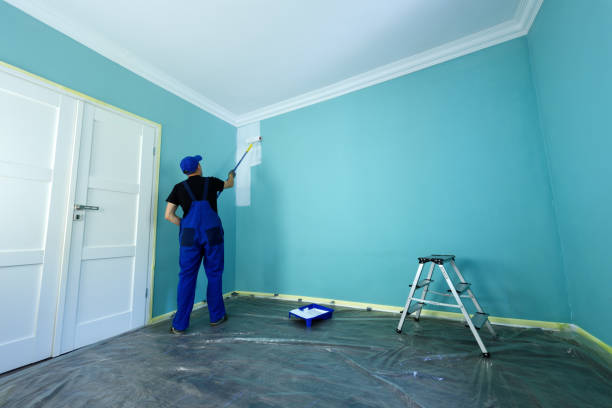
Preparing Your Home for Painting: Tips and Techniques
Posted by on 2024-03-15
When it comes to revitalizing your home's appearance, a fresh coat of paint can work wonders. Yet before you dip the brush into the bucket and start painting, preparing your home properly is crucial for achieving professional-looking results. This essay will explore some unconventional tips and techniques that might not immediately spring to mind but can greatly enhance the painting process.
Firstly, ponder the significance of timing in relation to weather conditions. Most homeowners overlook this aspect, focusing solely on interior temperatures. However, external humidity levels and temperature fluctuations can impact drying times and paint adherence significantly—even for indoor projects.
Start by inspecting surfaces meticulously for defects. We often disregard slight imperfections; nonetheless, minor cracks or holes become glaringly obvious once highlighted by new paint. Employ spackle or caulk to fill these blemishes prior to commencing actual painting.
Another commonly neglected step involves cleaning walls thoroughly. A concoction of water mixed with an unlikely ingredient—fabric softener—can effortlessly remove dust and cobwebs without leaving residue that could interfere with paint adhesion.
Regarding furniture placement during the project, rather than simply shoving items into the room's center as one might instinctively do, consider removing them entirely if feasible. By relocating furniture to a different area temporarily, you prevent accidental splatters and provide yourself ample space to navigate while painting.
Additionally, invest time in meticulously applying painter's tape along edges where walls meet trim or ceilings—a task many rush through or skip altogether due to impatience. Precision here ensures crisp lines that dramatically elevate the finish quality of your paint job.
Lastly, one often undervalued tool is lighting. Ample illumination may seem extraneous but is paramount when seeking to achieve uniform coverage without missing spots that could be overlooked under poorer light conditions.
In conclusion, taking time for preparation before embarking on a painting endeavor pays dividends in terms of final aesthetics and durability of your project. From considering meteorological influences and repairing surface flaws to thorough cleansing and strategic room arrangement—not forgetting precise taping methods plus adequate lighting—the accumulation of these lesser-known yet impactful actions will ensure your painted surfaces look impeccable for years to come.
Firstly, ponder the significance of timing in relation to weather conditions. Most homeowners overlook this aspect, focusing solely on interior temperatures. However, external humidity levels and temperature fluctuations can impact drying times and paint adherence significantly—even for indoor projects.
Start by inspecting surfaces meticulously for defects. We often disregard slight imperfections; nonetheless, minor cracks or holes become glaringly obvious once highlighted by new paint. Employ spackle or caulk to fill these blemishes prior to commencing actual painting.
Another commonly neglected step involves cleaning walls thoroughly. A concoction of water mixed with an unlikely ingredient—fabric softener—can effortlessly remove dust and cobwebs without leaving residue that could interfere with paint adhesion.
Regarding furniture placement during the project, rather than simply shoving items into the room's center as one might instinctively do, consider removing them entirely if feasible. By relocating furniture to a different area temporarily, you prevent accidental splatters and provide yourself ample space to navigate while painting.
Additionally, invest time in meticulously applying painter's tape along edges where walls meet trim or ceilings—a task many rush through or skip altogether due to impatience. Precision here ensures crisp lines that dramatically elevate the finish quality of your paint job.
Lastly, one often undervalued tool is lighting. Ample illumination may seem extraneous but is paramount when seeking to achieve uniform coverage without missing spots that could be overlooked under poorer light conditions.
In conclusion, taking time for preparation before embarking on a painting endeavor pays dividends in terms of final aesthetics and durability of your project. From considering meteorological influences and repairing surface flaws to thorough cleansing and strategic room arrangement—not forgetting precise taping methods plus adequate lighting—the accumulation of these lesser-known yet impactful actions will ensure your painted surfaces look impeccable for years to come.